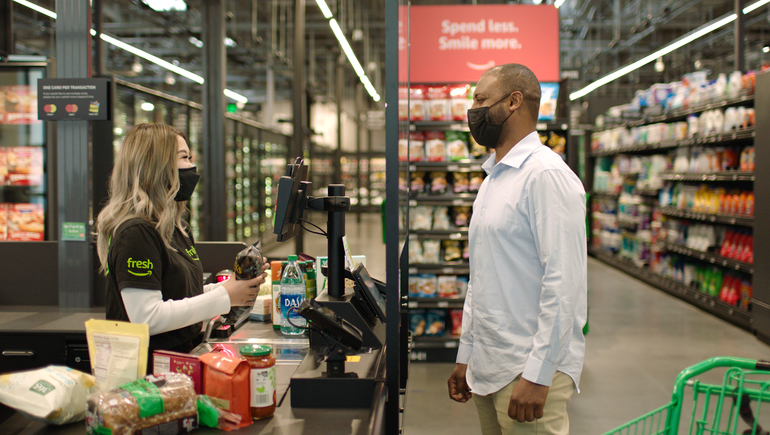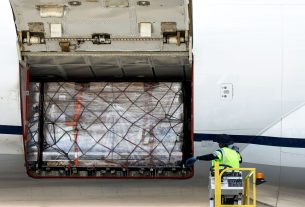Dive Brief:
- Amazon has halted the rollout of its Amazon Fresh grocery stores as the company figures out how to better differentiate them and improve their economics, CEO Andy Jassy said during the e-commerce company’s fourth quarter earnings call Thursday.
- Chief Financial Officer Brian Olsavsky said during the call that Amazon recorded a $720 million impairment charge in Q4, with Amazon Fresh and Amazon Go accounting for the bulk of that amount. He said Amazon decided to close some stores with low growth potential, but did not say how many will shutter under the banners.
- Jassy stressed the importance of grocery to Amazon’s business and noted that stores like Amazon Fresh are key to getting perishable goods into shoppers’ carts.
Dive Insight:
Pausing Amazon Fresh and closing down some locations less than three years into the grocery chain’s brick-and-mortar rollout is a worrying sign for Amazon. This comes as competitors like Walmart, Kroger, Aldi and Ahold Delhaize push forward with store expansions, acquisitions and cutting-edge technology integrations aimed at securing shopper loyalty.
On the other hand, with less than 50 stores currently operating, Amazon Fresh is looking to make some key adjustments at what’s still a relatively early stage in the chain’s development, before major fixes become even more costly.
The same holds for Amazon Go, the company’s Just-Walk-Out-powered convenience stores that launched in Seattle in 2018. There are currently 30 Amazon Go locations scattered throughout California, New York, Washington and Illinois.
“We’ve decided over the last year or so that we’re not going to expand the physical Fresh stores until we have that equation with differentiation and economic value that we like, but we’re optimistic that we’re going to find that in 2023,” Jassy said Thursday, according to a Seeking Alpha transcript.
The CEO’s comments are the first Amazon has made publicly in recent months about the expansion of Amazon Fresh stores. In December, The Information indicated in a report that the chain had halted its rollout, noting that Amazon Fresh had not opened a location since September and that finished stores that haven’t yet opened were starting to pile up around the country.
Jassy said during Thursday’s earnings call he’s “optimistic” Amazon Fresh will find its differentiation and economic value this year. “And when we do find that equation, we will expand it more expansively,” Jassy said.
Jassy, who assumed the top role at Amazon in 2021 and who made his first earnings call appearance on Thursday, said that offering both online and offline buying options is critical in grocery, underscoring the importance of Fresh stores to Amazon’s channel strategy, which also includes its primary online marketplace, Fresh online service and Whole Foods Market stores.
“We think grocery is a really important and strategic area for us,” he said. “It’s a very large market segment, and there’s a lot of frequency in how consumers shop for grocery. And we also believe that over time, grocery is going to be omnichannel.”
Amazon Fresh stores are positioned as mainstream markets that offer low prices, online shopping and a splash of futuristic checkout technology, either in the form of Amazon’s Just Walk Out computer-vision system, its proprietary smart carts, known as Dash Carts, or its palm-scanning technology called Amazon One.
Courtesy of Amazon
However, some industry experts say the shopping experience at Amazon Fresh stores isn’t sufficiently compelling or unique, while some reports have noted out-of-stock issues at some locations.
Tom Furphy, a former Amazon executive who helped build the Amazon Fresh brand, said in a recent interview the stores are too crowded with e-commerce pickers and struggle to solve clear shopping needs for consumers.
“I don’t know that they’re within striking distance” of fixing those and other issues, said Furphy, who currently serves as CEO of technology company Replenium.
For its Q4, which ended Dec. 31, Amazon reported a 6% rise in physical store sales, to $4.96 billion, while overall sales rose 9%, to $149.2 billion.



